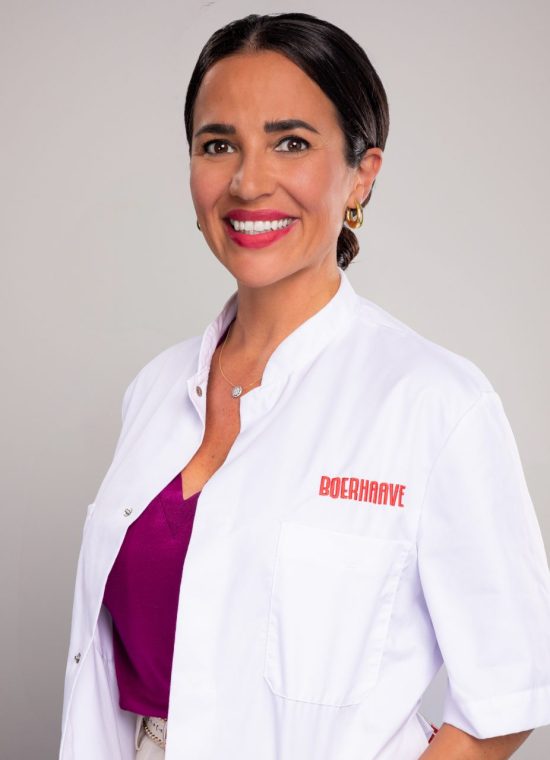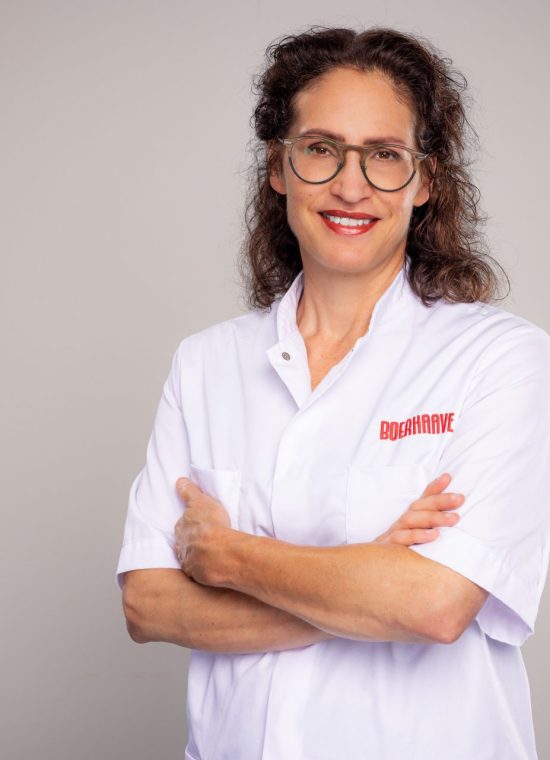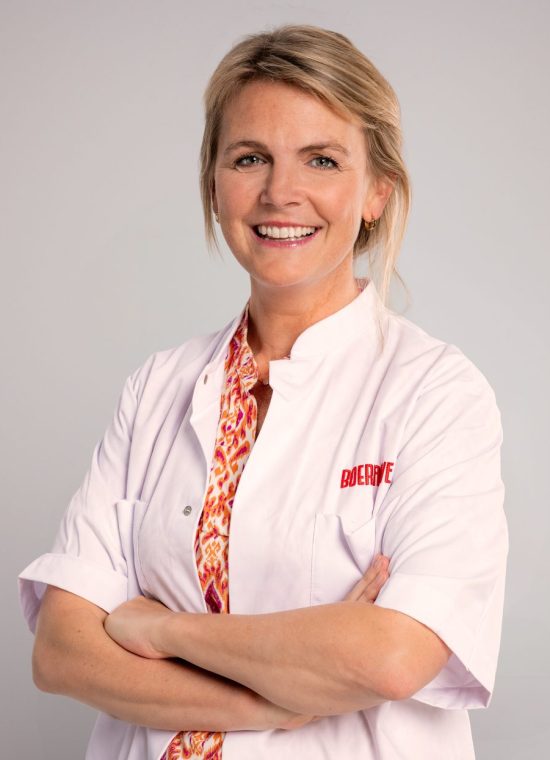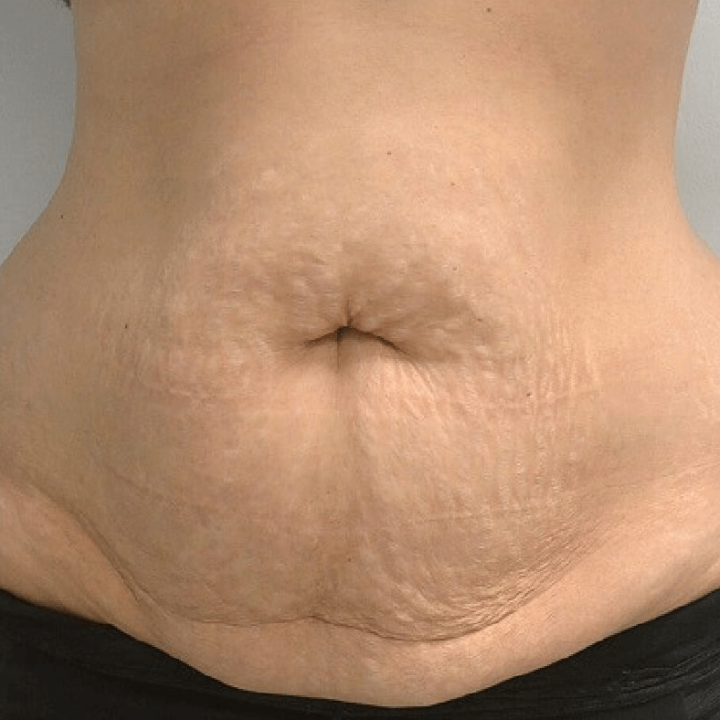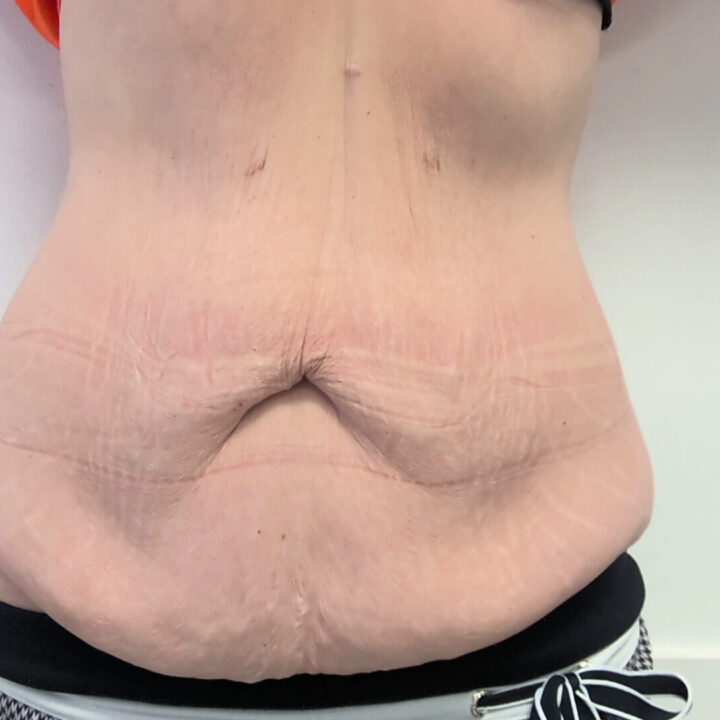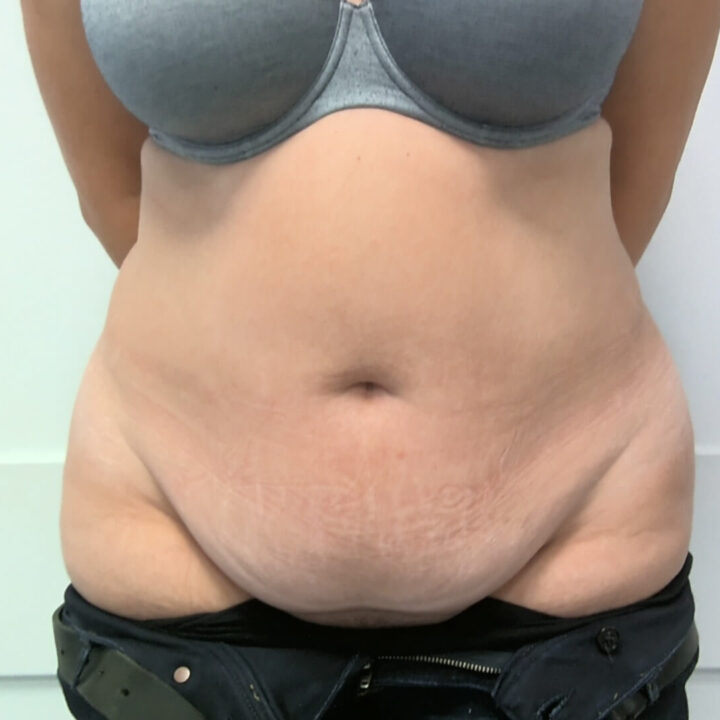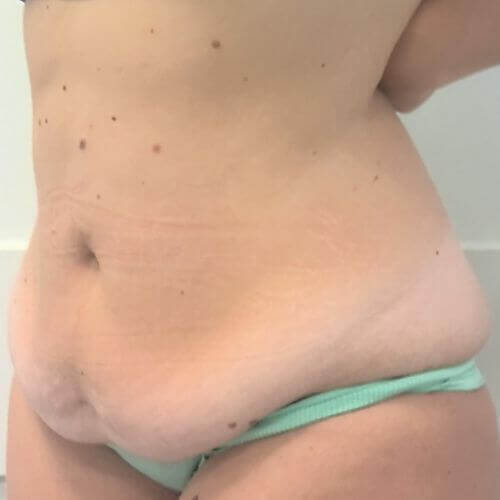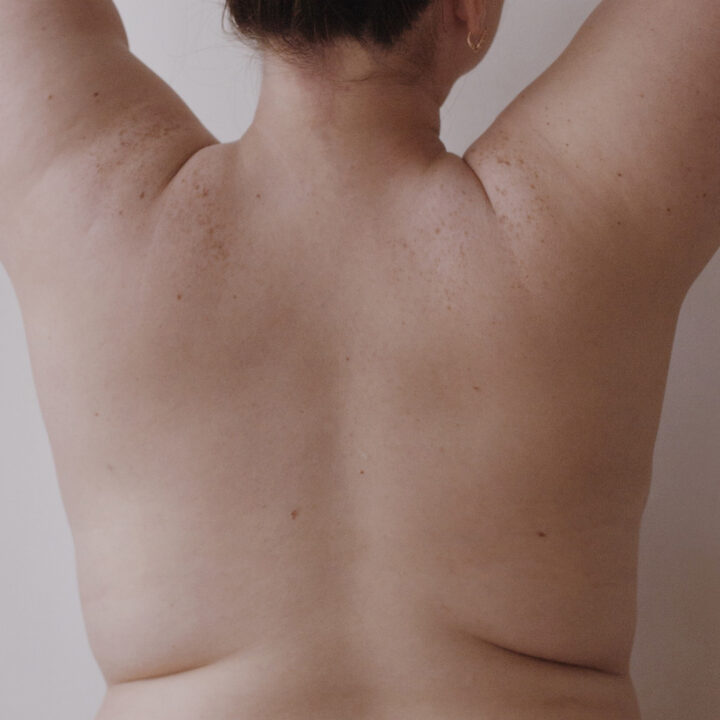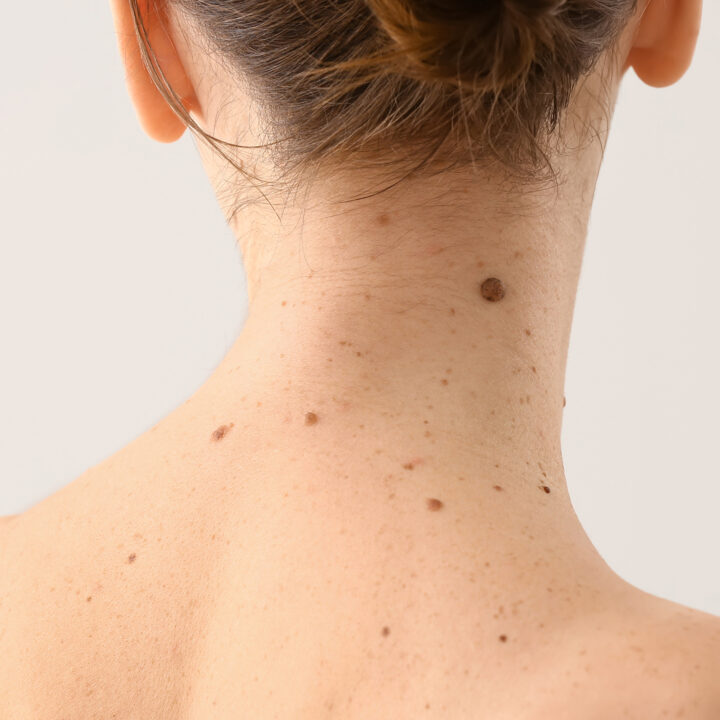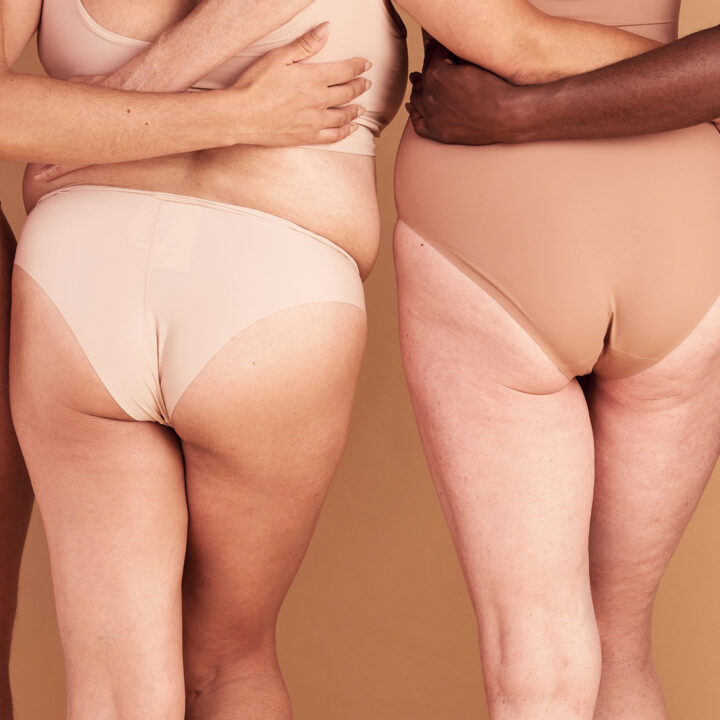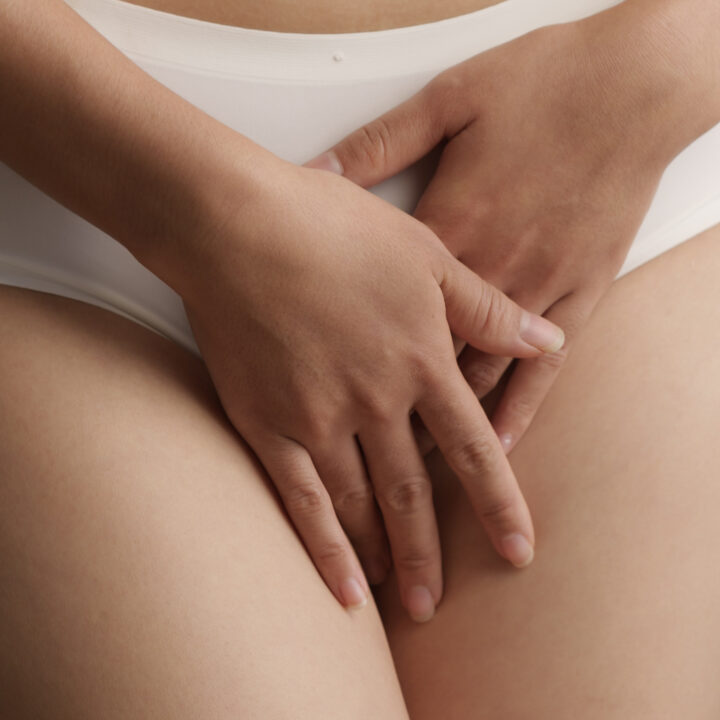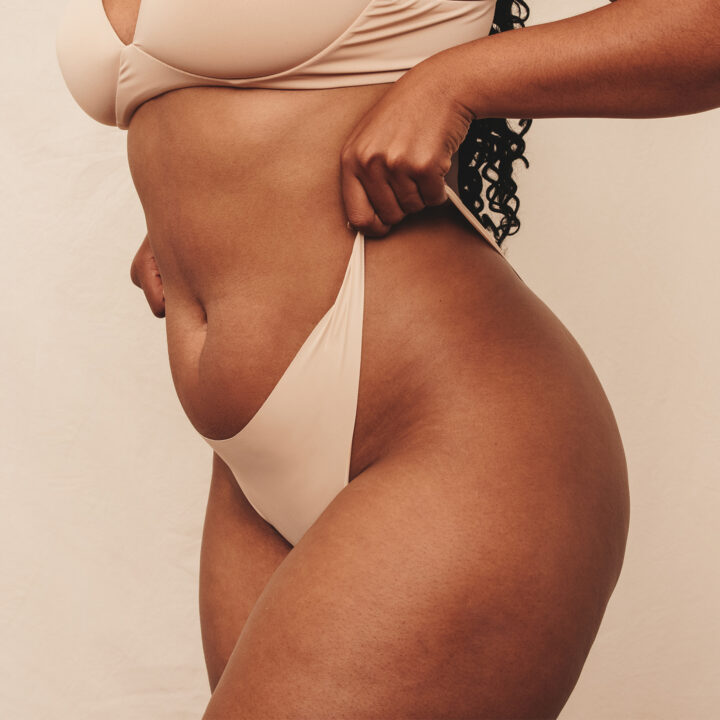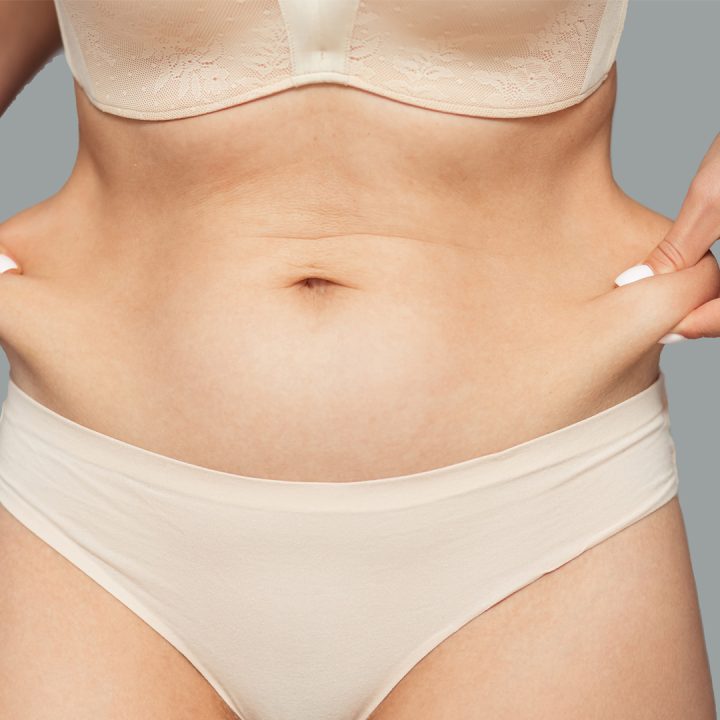Tummy tuck
Significant fluctuations in body weight can lead to an excess of skin in the abdomen area. A tummy tuck offers the solution. This procedure is also suitable for women whose abdominal muscles have slackened after pregnancy or who have scars or stretch marks across their tummies.
The best results are achieved if you are the right weight before the operation. It is therefore sometimes necessary to lose weight before the tummy tuck can be performed. A tummy tuck is certainly not a method for losing weight.
What does the tummy tuck cost
01 More information
The abdominal skin and underlying muscles may start to sag and slacken for example as a result of aging, as well as through pregnancy or weight loss. Having a tummy tuck is a possible solution.
If you have pockets of fat rather than excess skin, then liposuction may be a more suitable solution for you. If so, the plastic surgeon will suggest this to you during your consultation. If you are considering a tummy tuck, the best results can be achieved if you are the right weight before the procedure. It is therefore sometimes necessary to lose a bit of weight before the tummy tuck can be performed. A tummy tuck is certainly not a method for losing weight.
If your only complaint is too much skin under your belly button, a mini-tummy tuck can deliver good results. If the skin of your abdominal wall and your abdominal muscles have slackened, a total tummy tuck would be a better option for you. A total tummy tuck involves removing the excess tissue and stitching the stretched abdominal muscles on the left and right to each other along their midline.
The most common option is for a horizontal incision, just above the pubic area. This means it is below the bikini line. The length of the incision depends on how much skin has to be removed.
If there is a large amount of excess fat and skin, the Boerhaave Medical Centre can offer you an anchor tummy tuck or a fleur-de-lis tummy tuck. With a fleur-de-list tummy tuck, the scar is extended to include an additional vertical incision above the belly button.
A fleur-de-lis tummy tuck is suitable for people who have lost a significant amount of weight and who will not achieve the optimum results with a different type of tummy tuck procedure. This anchor tummy tuck can only be considered if your weight is stable and your diet is balanced.
02 Consultation
Plastic surgeon
The consultation is always held with the plastic surgeon who will be carrying out your procedure.
During this consultation, you can discuss what bothers you the most about the appearance of your abdomen and what you would like to have changed. The plastic surgeon will take down your medical history and examine your abdomen. They will then suggest the most suitable surgical technique for you and discuss it with you. The plastic surgeon will explain to you what this procedure entails and what you can expect in terms of end results. They will explain the difference between a mini-tummy tuck and a total tummy tuck.
In some cases, they may suggest an additional procedure, such as liposuction of the upper abdomen. The recovery period and pros and cons of the procedures will be explained. You will then be in a position to make a well-informed decision. The plastic surgeon will show you before and after photos of tummy tuck procedures they have previously performed.
Possible complications and risks are then discussed with you and an indication of the costs involved. The aim of the consultation is to inform you as clearly and fully as possible.
Consultants
Following on from your first consultation with your plastic surgeon, you will have an appointment with your consultant. The aim of this appointment is to tell you about the general aspects to be arranged with respect to your tummy tuck.
03 Procedure
You are expected to arrive at the Boerhaave clinic half an hour before your tummy tuck.
A tummy tuck is usually performed with an overnight stay. You will therefore be free to go home again the day after your operation. Before the procedure, the plastic surgeon carefully marks out what they are going to do. The general anaesthetic is then administered.
When performing a tummy tuck, the plastic surgeon will make an incision around the belly button. The belly button is then separated from the underlying tissue so it stays in position. A second incision is then made just above the pubic area and below the bikini line, extending from hip to hip.
The plastic surgeon separates the skin tissue from the underlying muscles up to the rib cage. The abdominal muscles, which have often slackened, are then tightened and stitched together, which is sometimes referred to as “reefing”. The skin flap, i.e. the loosened skin, is then pulled downwards towards the incision. Once the excess skin has been removed, the plastic surgeon carefully closes the wound with stitches.
At the point where the belly button is intended to be, a small hole is made in the skin. The belly button is pushed through this hole and stitched in place. The position of the belly button is then in line with the rest of the abdomen.
04 After care and recovery
After a tummy tuck procedure, you will usually stay overnight at the clinic. Once the nursing staff and anaesthetist give their approval for you to leave, you are free to go home the next day. After a tummy tuck procedure carried out under general anaesthetic, you may start eating and drinking easily digestible food, such as water, tea and rusks.
Post-procedure pain
For the first few days after the tummy tuck, you will feel a pulling pain in your skin and muscles around the abdomen. The area operated on will be sensitive and sore, and feel tight. In the first week after the tummy tuck, you will not be able to do much, as your daily business will be hampered by very sore muscles. The feeling is comparable with doing a couple of hundred abdominal muscle exercises.
The nurse will advise you to take 2 Paracetamol tablets (500 mg) for the pain once every 4 to 6 hours. Once you are back home, you can continue this dosage to deal with any pain. As the pain reduces, you can reduce the dosage to 1 tablet every 4 to 6 hours.
Recovery
As with every surgical procedure, the body takes time to recover. The treated area will initially be bruised, sore and swollen. The scars may also be red and raised immediately after the tummy tuck. You shouldn’t worry about this, as it is your body’s natural reaction.
The skin will feel hard for a few weeks, which is due to the scars forming. The skin may sometimes be more sensitive or less sensitive than usual, which is a normal reaction to the operation and will gradually disappear. Swelling and bruising will gradually subside. For the first 4 weeks, you will wear a compression girdle day and night. For the next 2 weeks after this, you will only need to wear it at night.
Scar cream
At your first check-up, you will be given a scar care cream to take home with you. Once the wound has closed and the scabs have disappeared, you can start applying the scar cream. If you apply this cream to the closed wound twice a day, you increase the chance of the wound healing nicely.
After a tummy tuck procedure, you will usually stay overnight at the clinic. Once the nursing staff and anaesthetist give their approval for you to leave, you are free to go home the next day. After a tummy tuck procedure carried out under general anaesthetic, you may start eating and drinking easily digestible food, such as water, tea and rusks.
Post-procedure pain
For the first few days after the tummy tuck, you will feel a pulling pain in your skin and muscles around the abdomen. The area operated on will be sensitive and sore, and feel tight. In the first week after the tummy tuck, you will not be able to do much, as your daily business will be hampered by very sore muscles. The feeling is comparable with doing a couple of hundred abdominal muscle exercises.
The nurse will advise you to take 2 Paracetamol tablets (500 mg) for the pain once every 4 to 6 hours. Once you are back home, you can continue this dosage to deal with any pain. As the pain reduces, you can reduce the dosage to 1 tablet every 4 to 6 hours.
Recovery
As with every surgical procedure, the body takes time to recover. The treated area will initially be bruised, sore and swollen. The scars may also be red and raised immediately after the tummy tuck. You shouldn’t worry about this, as it is your body’s natural reaction.
The skin will feel hard for a few weeks, which is due to the scars forming. The skin may sometimes be more sensitive or less sensitive than usual, which is a normal reaction to the operation and will gradually disappear. Swelling and bruising will gradually subside. For the first 4 weeks, you will wear a compression girdle day and night. For the next 2 weeks after this, you will only need to wear it at night.
Scar cream
At your first check-up, you will be given a scar care cream to take home with you. Once the wound has closed and the scabs have disappeared, you can start applying the scar cream. If you apply this cream to the closed wound twice a day, you increase the chance of the wound healing nicely.
After a tummy tuck procedure, you will usually stay overnight at the clinic. Once the nursing staff and anaesthetist give their approval for you to leave, you are free to go home the next day. After a tummy tuck procedure carried out under general anaesthetic, you may start eating and drinking easily digestible food, such as water, tea and rusks.
Post-procedure pain
For the first few days after the tummy tuck, you will feel a pulling pain in your skin and muscles around the abdomen. The area operated on will be sensitive and sore, and feel tight. In the first week after the tummy tuck, you will not be able to do much, as your daily business will be hampered by very sore muscles. The feeling is comparable with doing a couple of hundred abdominal muscle exercises.
The nurse will advise you to take 2 Paracetamol tablets (500 mg) for the pain once every 4 to 6 hours. Once you are back home, you can continue this dosage to deal with any pain. As the pain reduces, you can reduce the dosage to 1 tablet every 4 to 6 hours.
Recovery
As with every surgical procedure, the body takes time to recover. The treated area will initially be bruised, sore and swollen. The scars may also be red and raised immediately after the tummy tuck. You shouldn’t worry about this, as it is your body’s natural reaction.
The skin will feel hard for a few weeks, which is due to the scars forming. The skin may sometimes be more sensitive or less sensitive than usual, which is a normal reaction to the operation and will gradually disappear. Swelling and bruising will gradually subside. For the first 4 weeks, you will wear a compression girdle day and night. For the next 2 weeks after this, you will only need to wear it at night.
Scar cream
At your first check-up, you will be given a scar care cream to take home with you. Once the wound has closed and the scabs have disappeared, you can start applying the scar cream. If you apply this cream to the closed wound twice a day, you increase the chance of the wound healing nicely.
05 Results
The final results of a tummy tuck will not be visible until after a couple of months. Your abdomen will be flatter and tighter. The results of a tummy tuck are generally lasting. However, it may be necessary to undergo another procedure, if there is further slackening in the skin and muscle tissue or as a result of aging or pregnancy.
Scars
The scars after a tummy tuck are usually just above the public area and below the bikini line. The scar runs from hip to hip. There will also be a small barely visible scar around the belly button. The plastic surgeon will do everything they can to ensure that the scars are as invisible as possible. The scars will initially be red and swollen, but this will start to fade after a couple of weeks. It is useful to know that a scar takes 1 to 1½ years to completely calm down. So remember to apply the scar cream to your scars and stay out of the sun. After the first year, always use factor 30 or higher when you are in the sun, to protect your skin.
06 Risks and complications
It is important you are aware that every surgical intervention can entail risks and complications. Plastic surgery procedures are in principle carried out on healthy people, so the risks and chances of complications are low. We make sure any risks are reduced to an absolute minimum, by providing plenty of information, taking a thorough medical history (noting your case history, including medication, any problems experienced in previous operations, allergies, etc.) and applying our professional procedures.
Tummy tucks are successfully performed each week at the Boerhaave Medical Centre. The chances of any complications arising are luckily rare. You can help reduce certain risks by carefully reading through the instructions you are given prior to your tummy tuck.
Possible complications of a surgical procedure may be:
- Haematoma (blood clot under the skin which has to be removed)
- Adverse reaction to the sedation
- Haemorrhaging
- Infection
- Change in sensitivity
- Permanently visible scars
- Damage to underlying structures
- Unsatisfactory aesthetic result
- Excessive swelling in the abdominal cavity.
Smoking
Patients who smoke or use tobacco or nicotine products (such as nicotine patches and chewing gum) at the time of their surgery have a greater risk of complications, such as skin loss and impaired wound healing. People who are exposed to passive smoking may also have an increased risk of complications such as these. What’s more, smoking may have a negative effect on the anaesthesia, which may in turn lead to an increased risk of bleeding. People who are not exposed to tobacco smoke or nicotine-containing products have a significantly lower risk of such complications. It is important not to smoke for at least 2 weeks prior to the operation and to keep this up for the entire recovery process.
More information
Plan your appointment now in our agenda or let us call you back.


